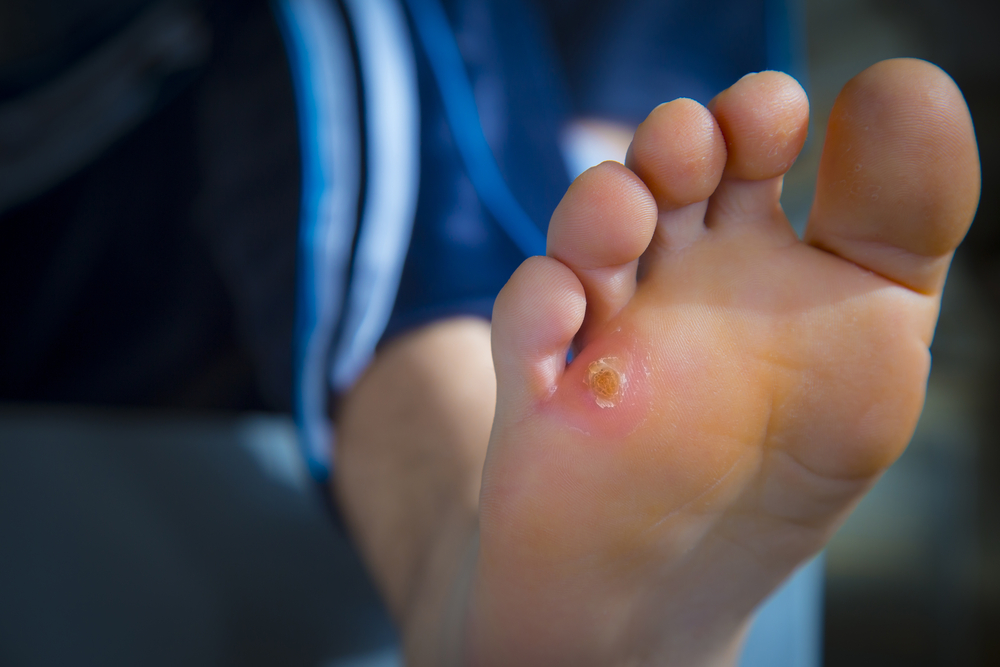
Corns tend to develop on areas of your feet that are prone to excessive pressure, like on the sides of your toes. Corns can cause agonizing pain with every step you take, making corrective treatment at the office of Errol Gindi, D.P.M., in Valley Stream, New York, imperative. Book your corn evaluation online or call the office directly to schedule your appointment.
request an appointmentWhat causes corns?
Corns are small thickened patches of dead skin that have a central core. They tend to have hard centers, surrounded by tender and inflamed skin. You usually develop corns on areas of your feet that undergo excessive pressure, possibly from friction from your shoes, rather than weight-bearing areas.
For instance, corns can form across the tops of your toes if your toes rub up against the insides of your shoes. While anyone can develop painful corns, they’re more likely to form because of:
- Not wearing socks
- Wearing ill-fitting shoes, including high heels
- Foot deformities, such as hammertoes or bunions
If you develop corns, you may also struggle with thickened calluses. While calluses don’t usually cause pain, they can certainly be uncomfortable and unsightly. Calluses form on weight-bearing areas, such as your heels.
When should I see a podiatrist for a corn?
At the office of Errol Gindi, D.P.M., you can get comprehensive corn corrective and preventive solutions, so you won’t have to live another day with unbearable foot pain. Dr. Gindi encourages you to come in for an examination if your corn is:
- Tender or inflamed
- Causing pain while walking
- Getting worse or not improving with home remedies
Corns can be either soft or hard. If you have a soft corn, you may notice tiny red thickened bumps developing between your toes.
Or, if you have hard corns, you’re probably going to see thickened bumps of skin over the tops of your toes or even on the outside of your little toe. Seed corns are similar, although they often form on the heel or ball of your foot.
In any case, because corns can progress and become increasingly painful without proper treatment, schedule an evaluation with Dr. Gindi right away. It’s especially important to have corns treated by a podiatrist if you have diabetes since treating corns on your own can increase your risk of developing a serious diabetic foot wound.
How are corns treated?
Dr. Gindi can treat your corns on the spot, so you can get the relief you need right away. He applies a prescription-strength salicylic acid solution and gently trims corns with a sterile scalpel and pares down any thickened calluses. Once he removes your corns, Dr. Gindi applies a topical medication and may bandage your treated areas.
For more severe corns, Dr. Gindi could recommend surgical corn removal. This procedure, known as corn enucleation, is performed in the office after Dr. Gindi thoroughly numbs your treatment area. He uses a specialized tool to punch out the corn for removal while taking extreme caution to avoid affecting too much surrounding healthy tissue.
To prevent corns from coming back, Dr. Gindi counsels you on preventive measures you can take at home. Switching to roomier shoes, soaking your feet and applying foot moisturizers, and always wearing socks with your shoes can all lower your risk of future corns.
Get relief from corns by getting started on treatment at the office of Errol Gindi, D.P.M., right away. Schedule your corn exam either online or over the phone.